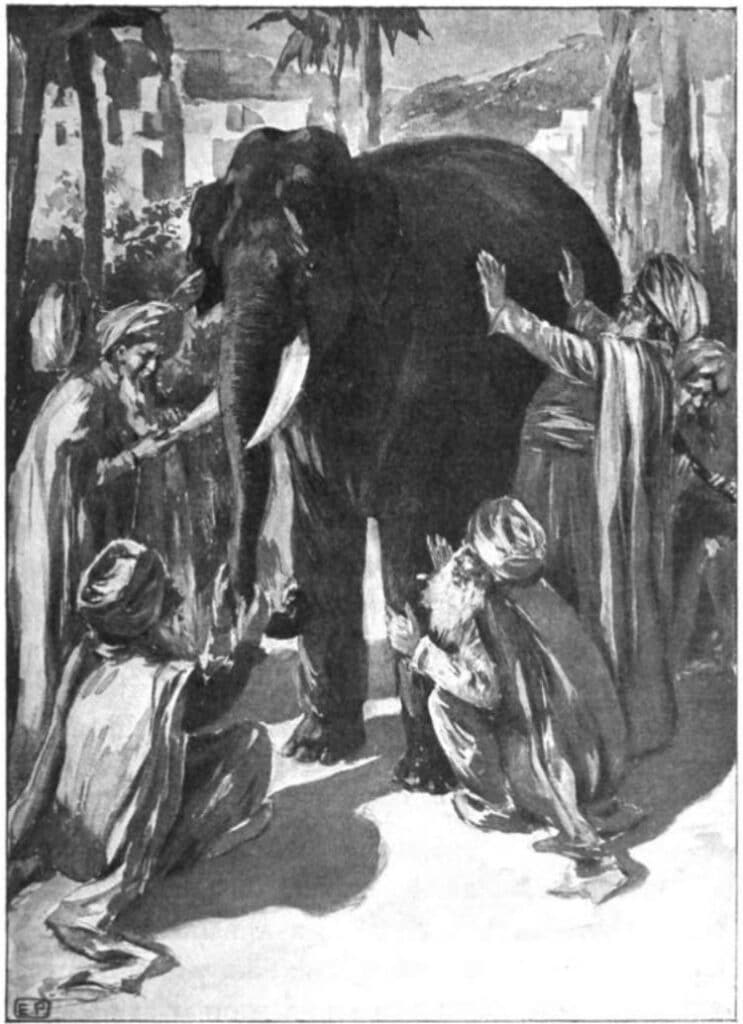In Buddhist, Hindu, and Jain tradition, there is a parable that goes something like this:
A group of blind men heard that a strange animal, called an elephant, had been brought to the town. None of them were aware of its form. They said: “We must know it by touch, of which we are capable”. They sought it out, and when they found it, they felt it. The first person, whose hand landed on the trunk, said, “This is like a thick snake”. For another one whose hand reached its ear, it seemed like a kind of fan. Another, whose hand was upon its leg, said, “The elephant is a pillar like a tree-trunk.” The blind man who placed his hand upon its side said, “The elephant is a wall.” Another felt its tail and described it as a rope. The last touched its tusk, claiming that the elephant is hard, smooth and like a spear.

The GF 100-200 is like the elephant in the parable. Various groups of people perceive it entirely differently. People who test lenses quantitatively – like yours truly – say that, especially at the long end, it’s the least sharp of all the GF lenses except for the GF 35-70 at macro distances. A relevant data point: at 200mm, mounted on the GFX 100x, it is outperformed by the Nikon F-mount 70-200mm E on a Nikon Z7.
However, many photographers say that it’s a very sharp lens throughout its focal length range, and some say it’s their favorite GF lens.
I don’t think anyone is lying here. Nor are folks necessarily confused on their impressions and measurements of the lens. I think it’s a case of different standards and different perceptions creating a different qualitative impression.
There is a human tendency to think that the loser is a comparison test is perforce bad. That’s not the case in general, and it’s not the case here. When I say the GF 100-200 is the second weakest of the GF lenses, I’m not saying it’s a bad lens. If it’s weaker than the Nikon 70-200E, that’s not much of a knock considering that the Nikkor is an outstanding zoom. In absolute terms, it’s got an MTF50 of about 1500 cycles per picture height on axis at 200mm at apertures wider than f/16. As GF lenses go, that’s nothing to write home about. However, in my experience, MTF50 of 1500 cycles per picture height is enough to produce 24×32 inch prints that are subjectively crisp.
People also tend to enlarge the scope of things they like and things they don’t. If they like the GF 100-200 because it’s relatively inexpensive and lightweight, and covers a range of focal lengths not available with GF primes, they may see its quite respectable resolution as superlative. I’ve even seen people raving about its outstanding color, which, in my experience, is on a par with the rest of the GF lineup. It’s not that the color is bad. Quite the opposite; it’s fine. It’s just not different from the rest of Fuji’s medium format lenses.
Thank you (again) for this wonderful serie about the fuji GFX 100 cameras and lenses. The use of this parable is a very nice way to show how reviews can be different. I am a Nikon user and overall I find the Z -lenses stand out in their much improved lenscoatings. A quality not easy to put in numbers.
I am tempted to use a fuji GFX100 for architecture since there I really could use some more pixels.